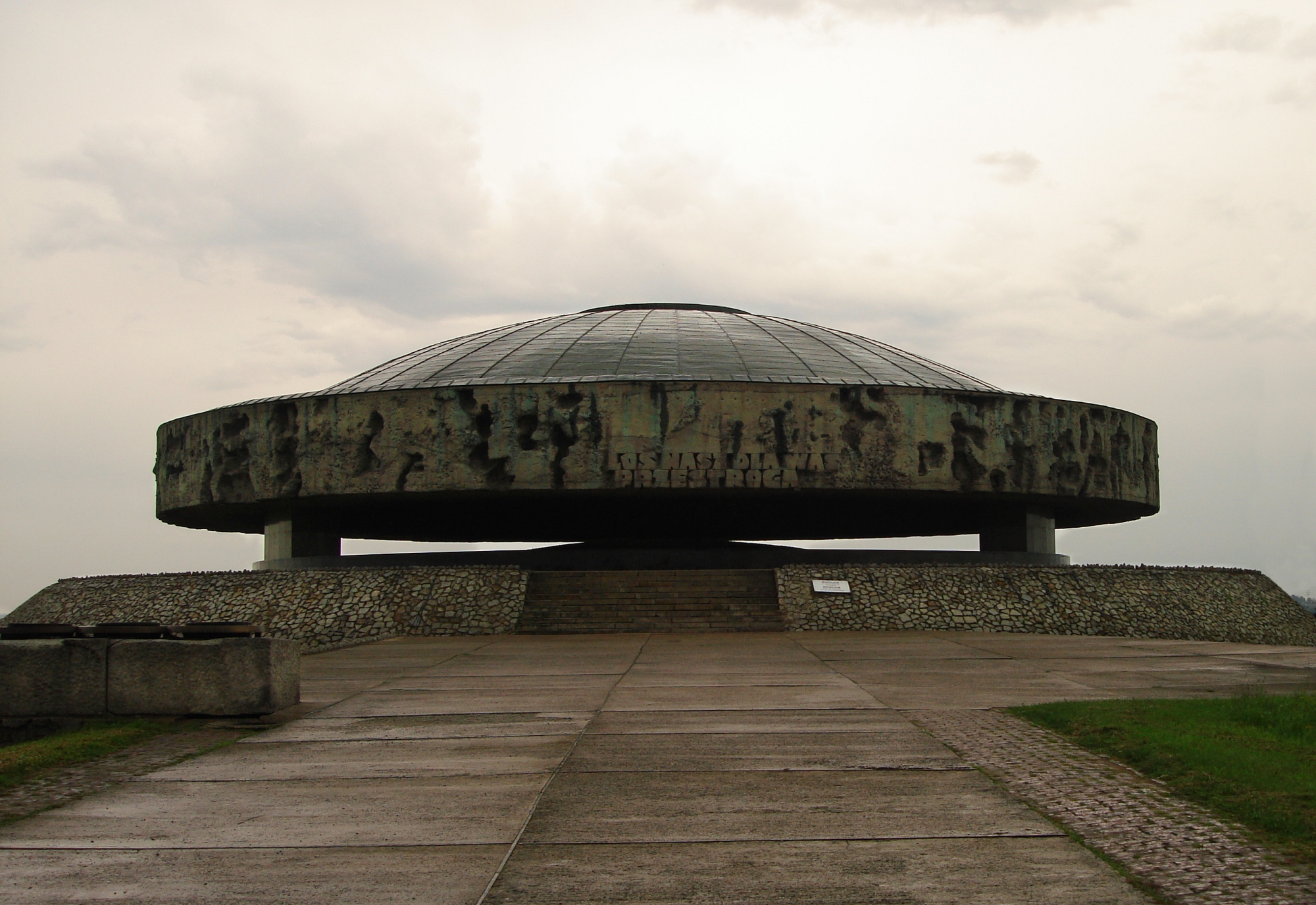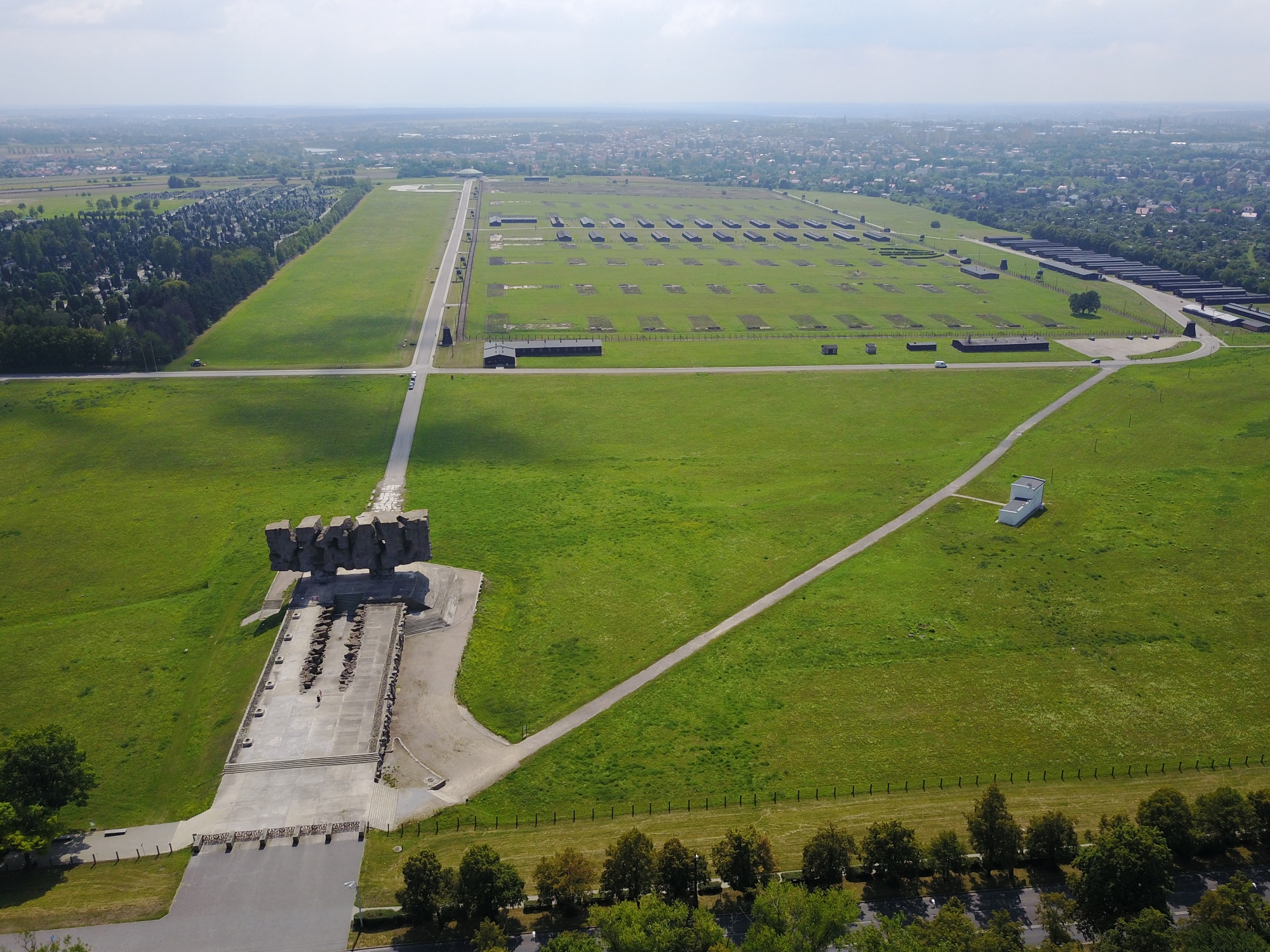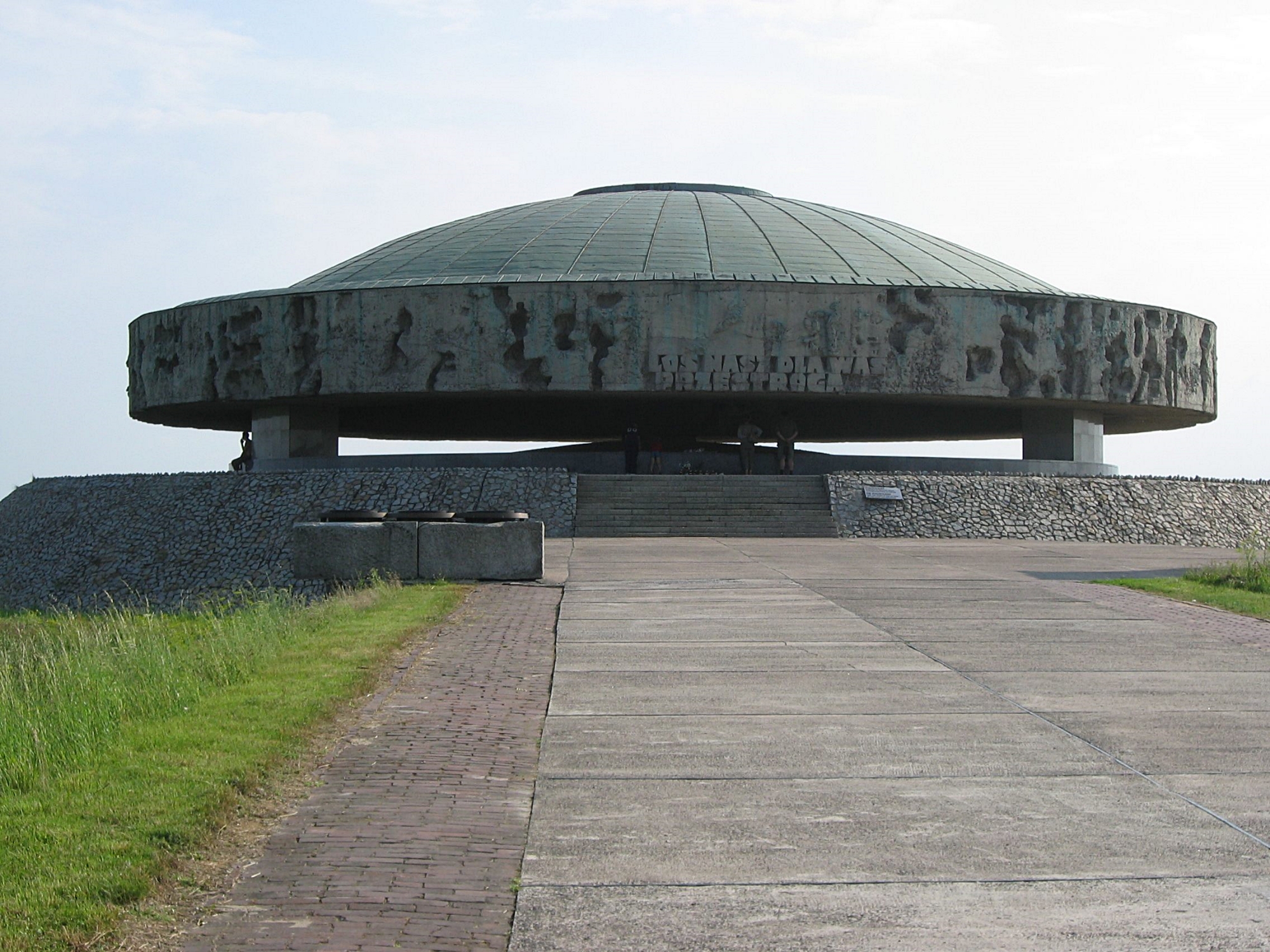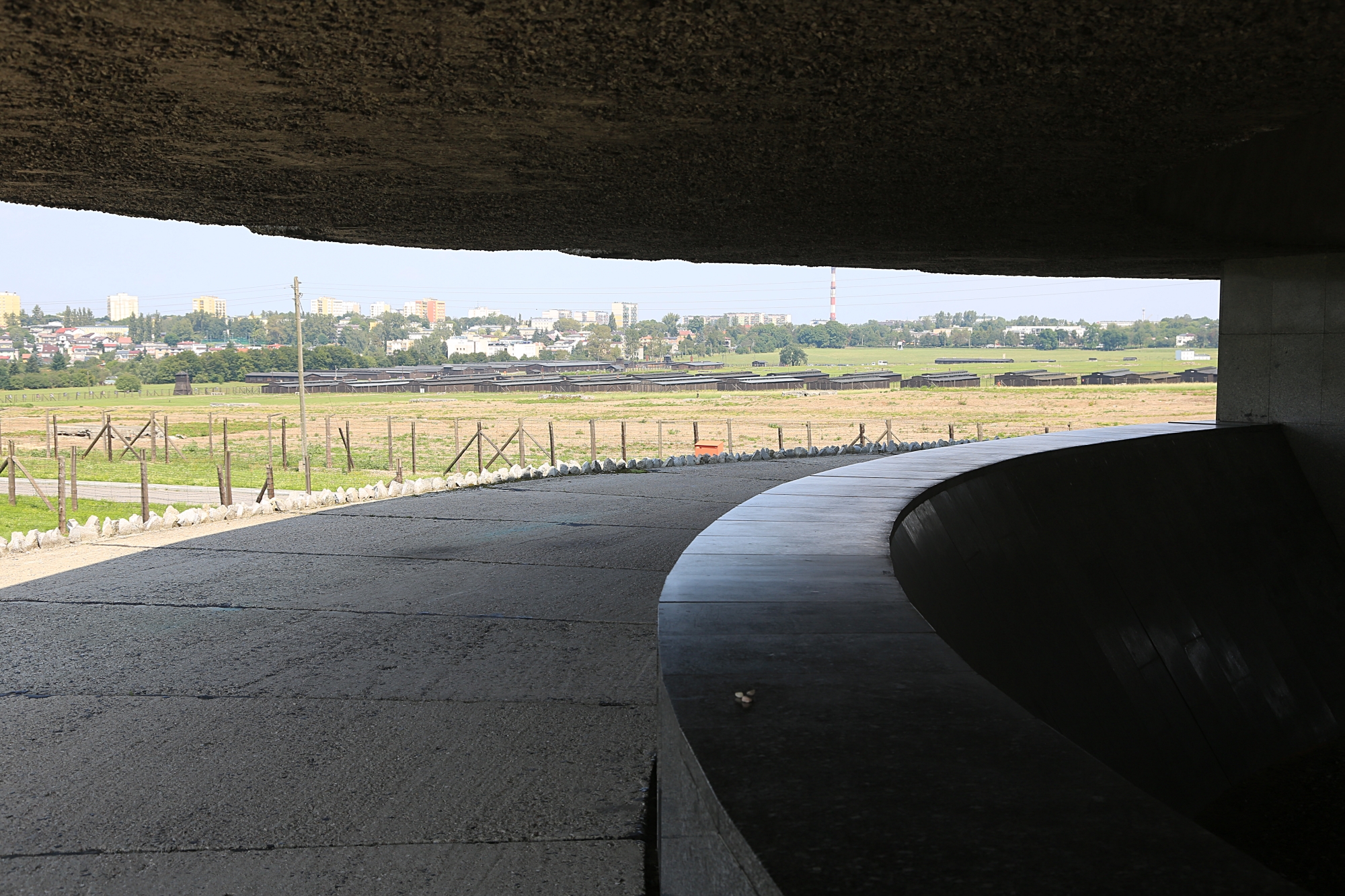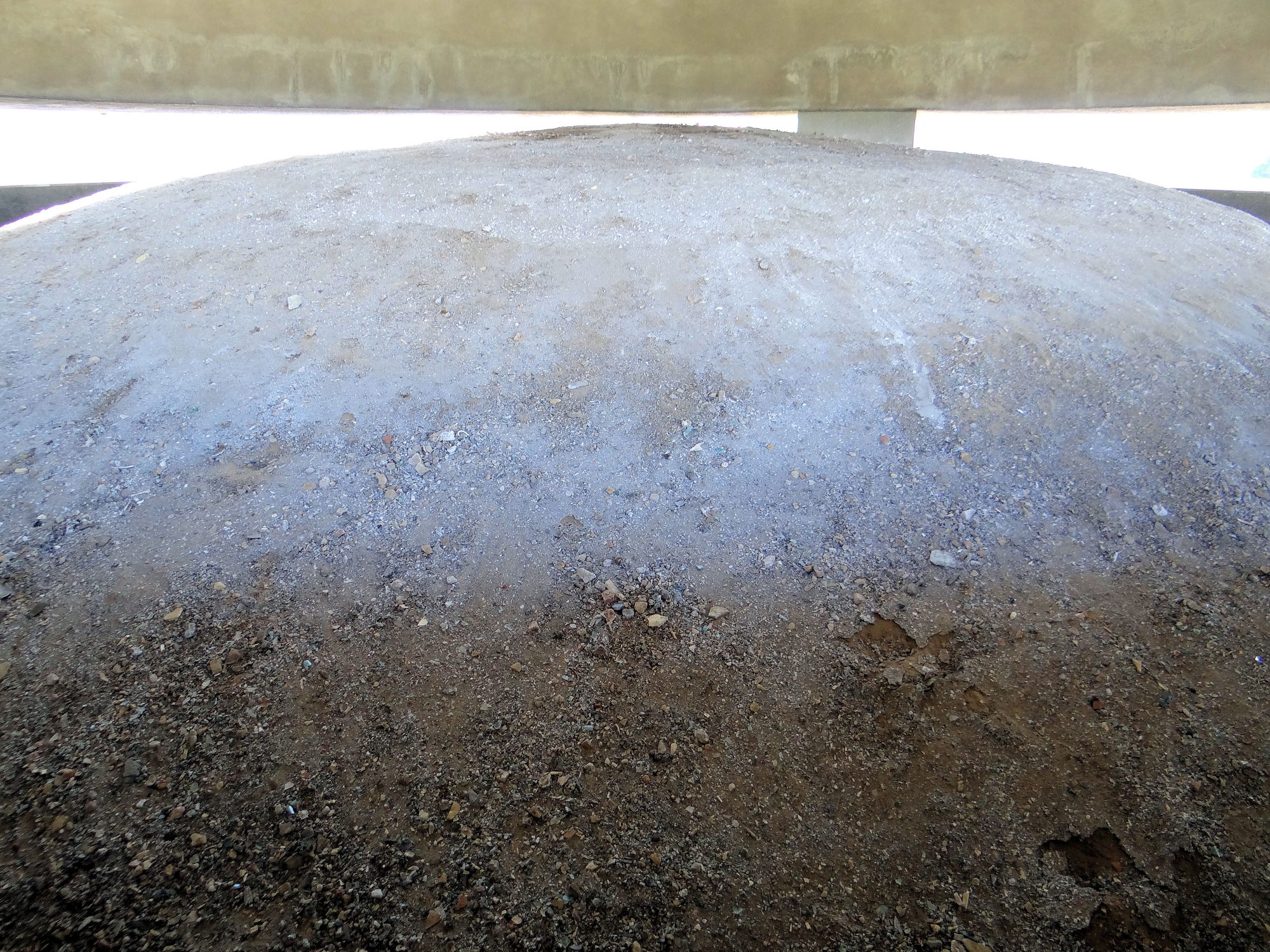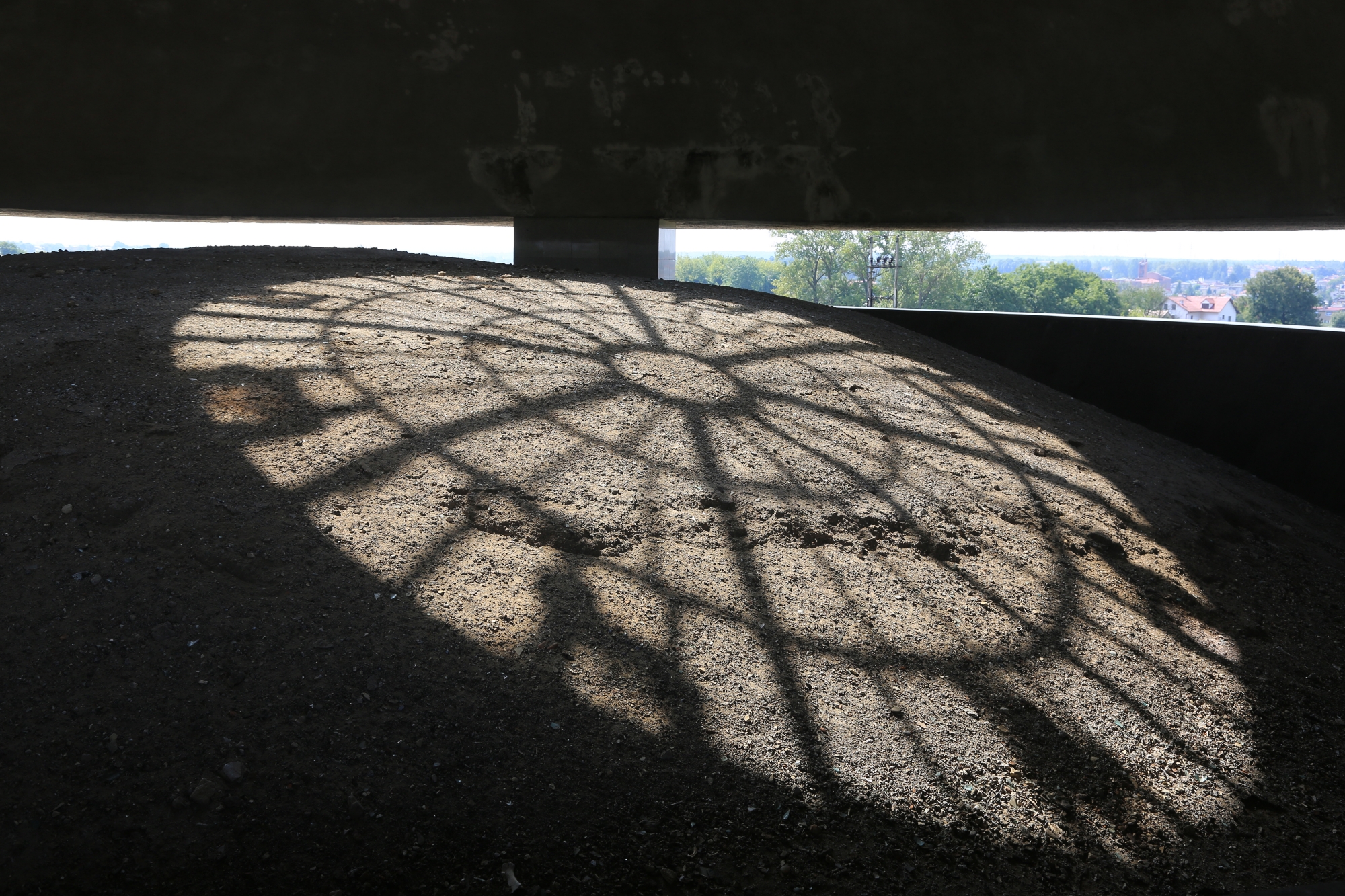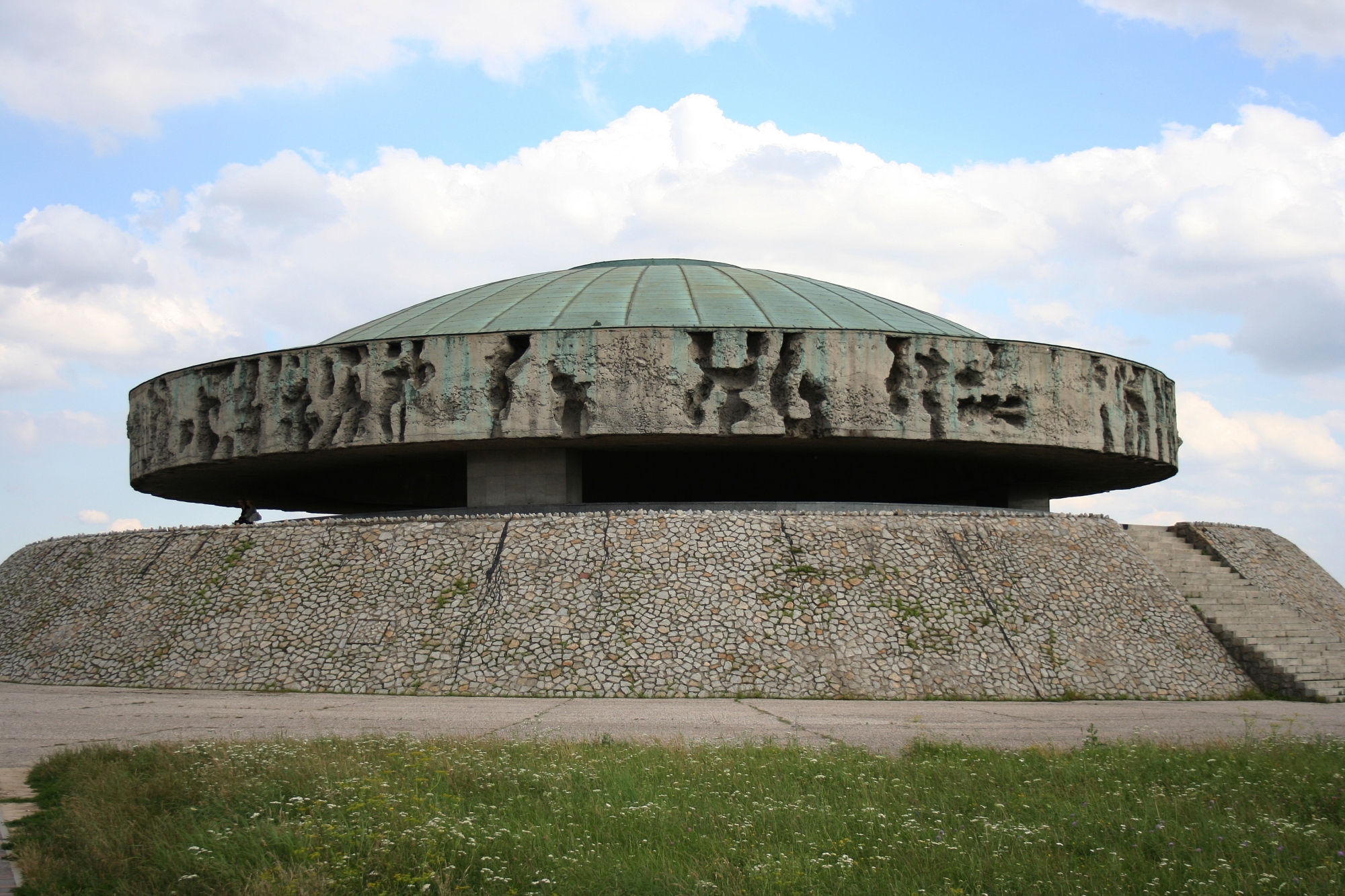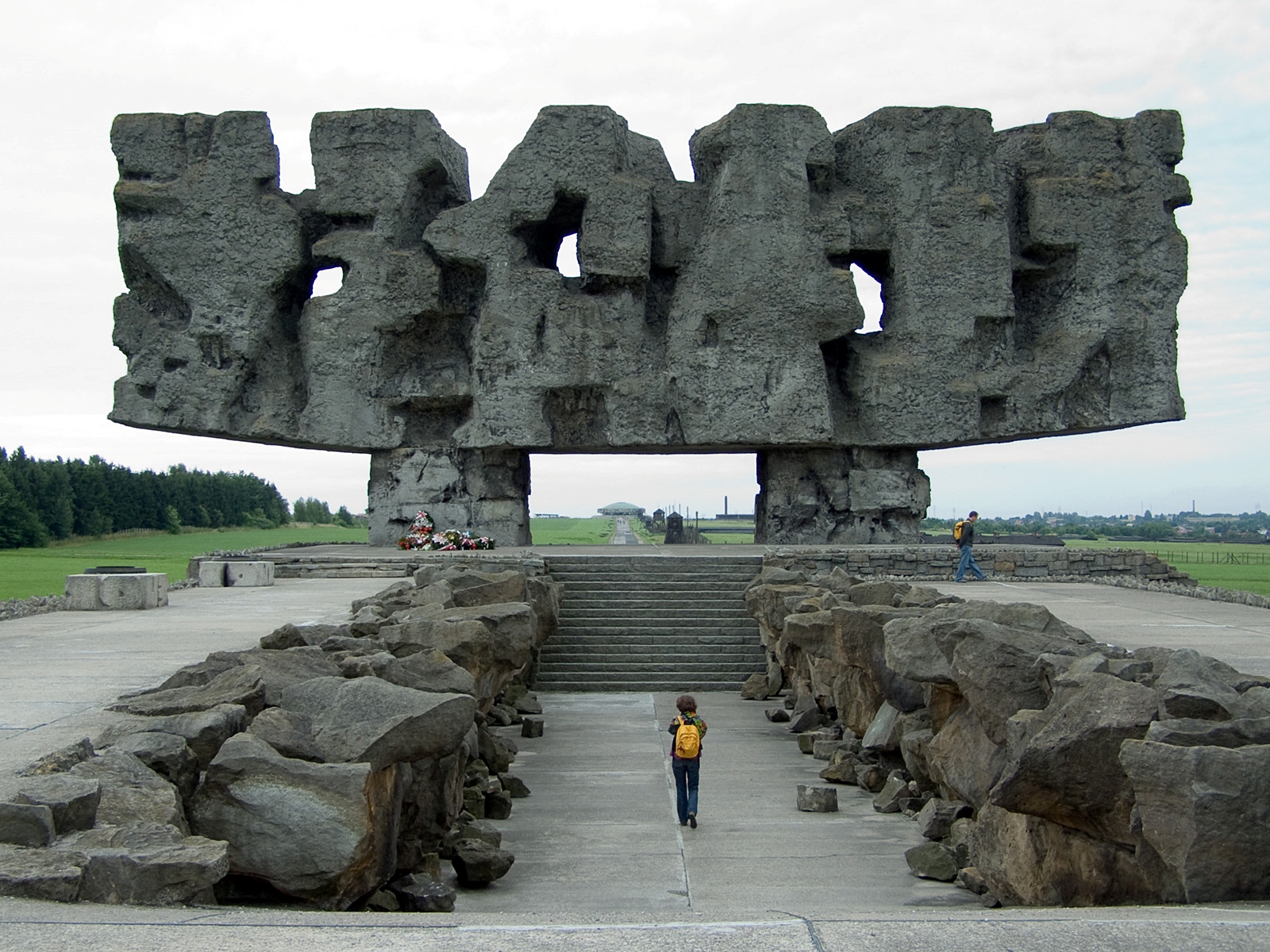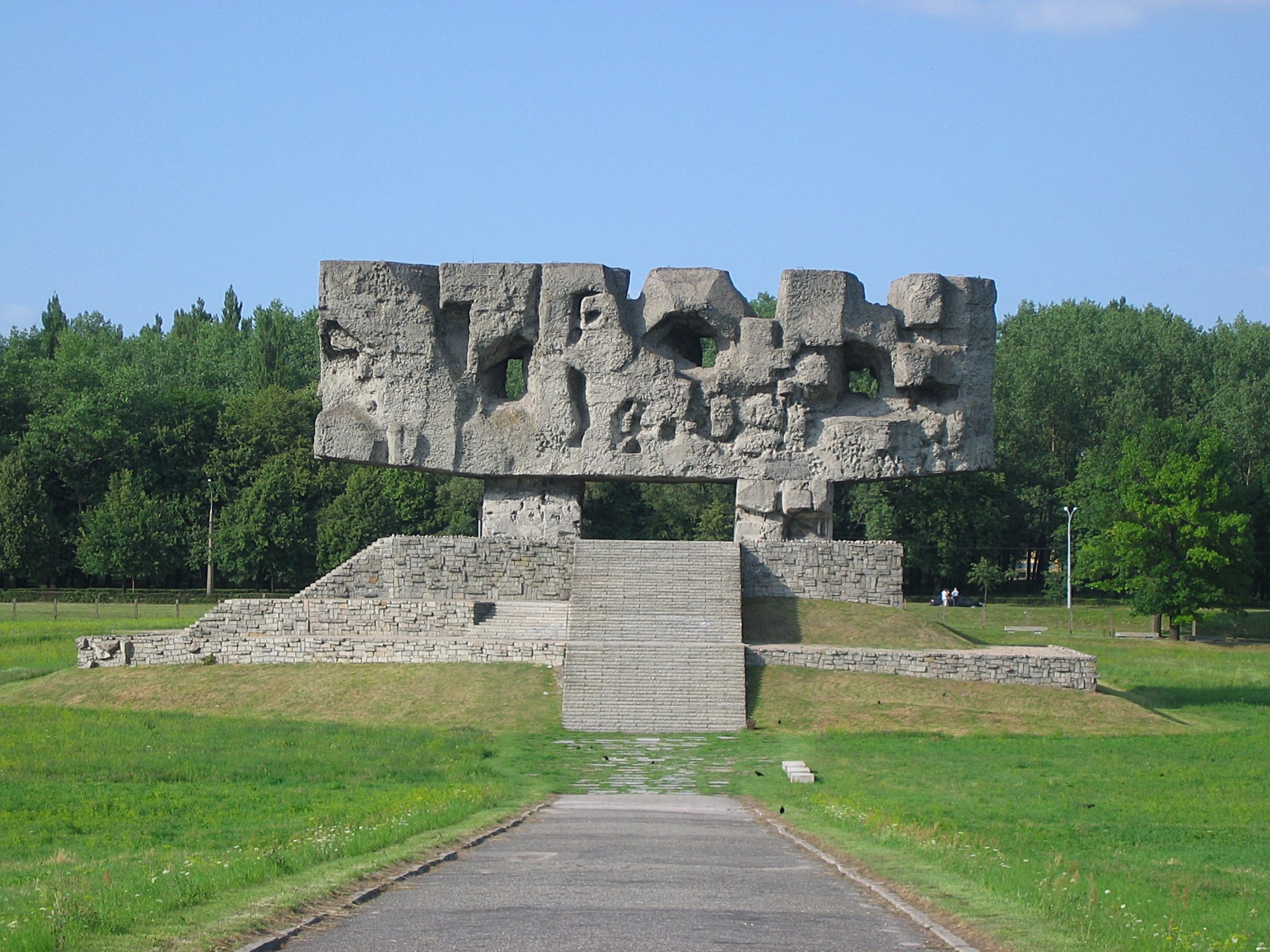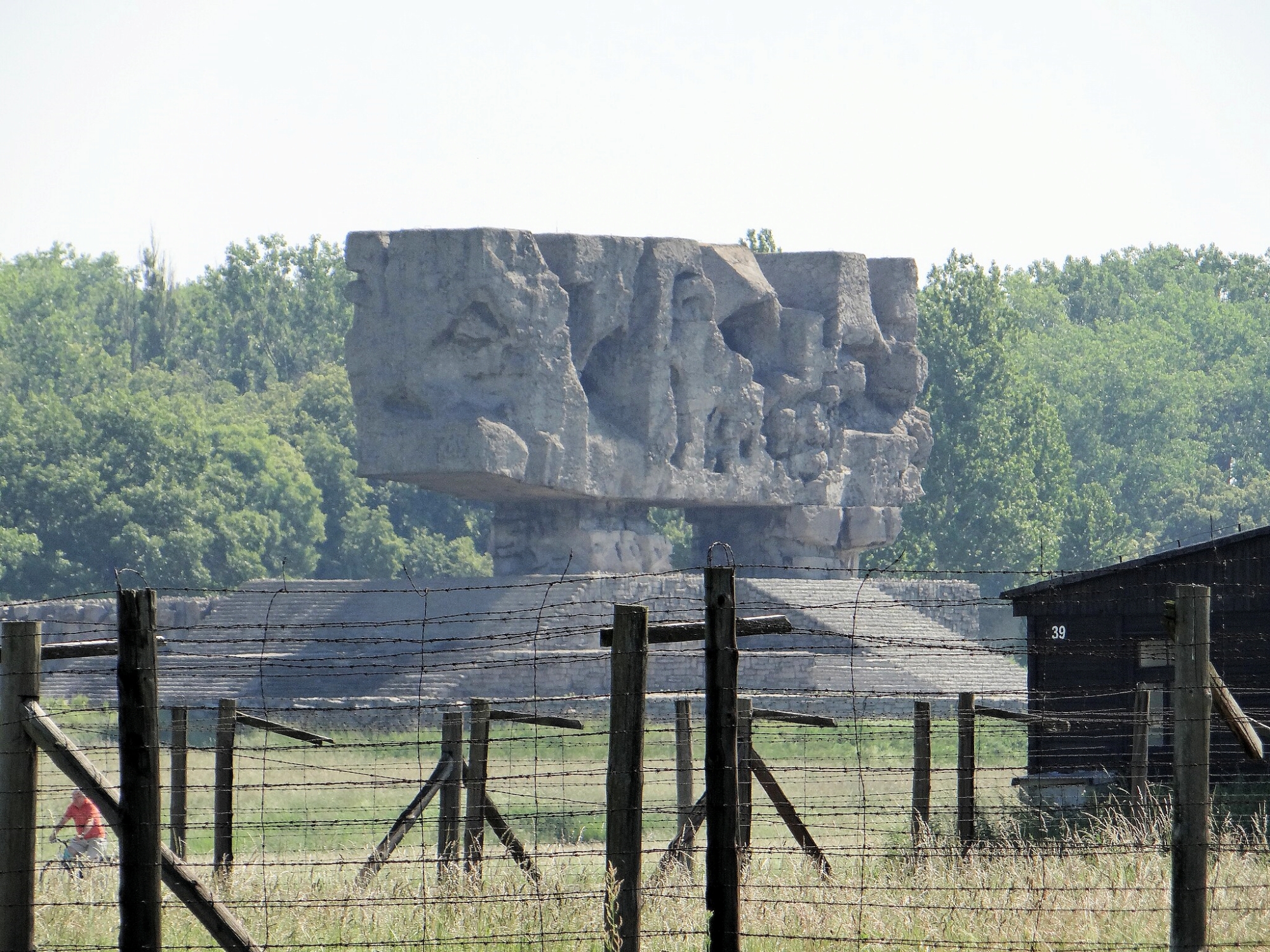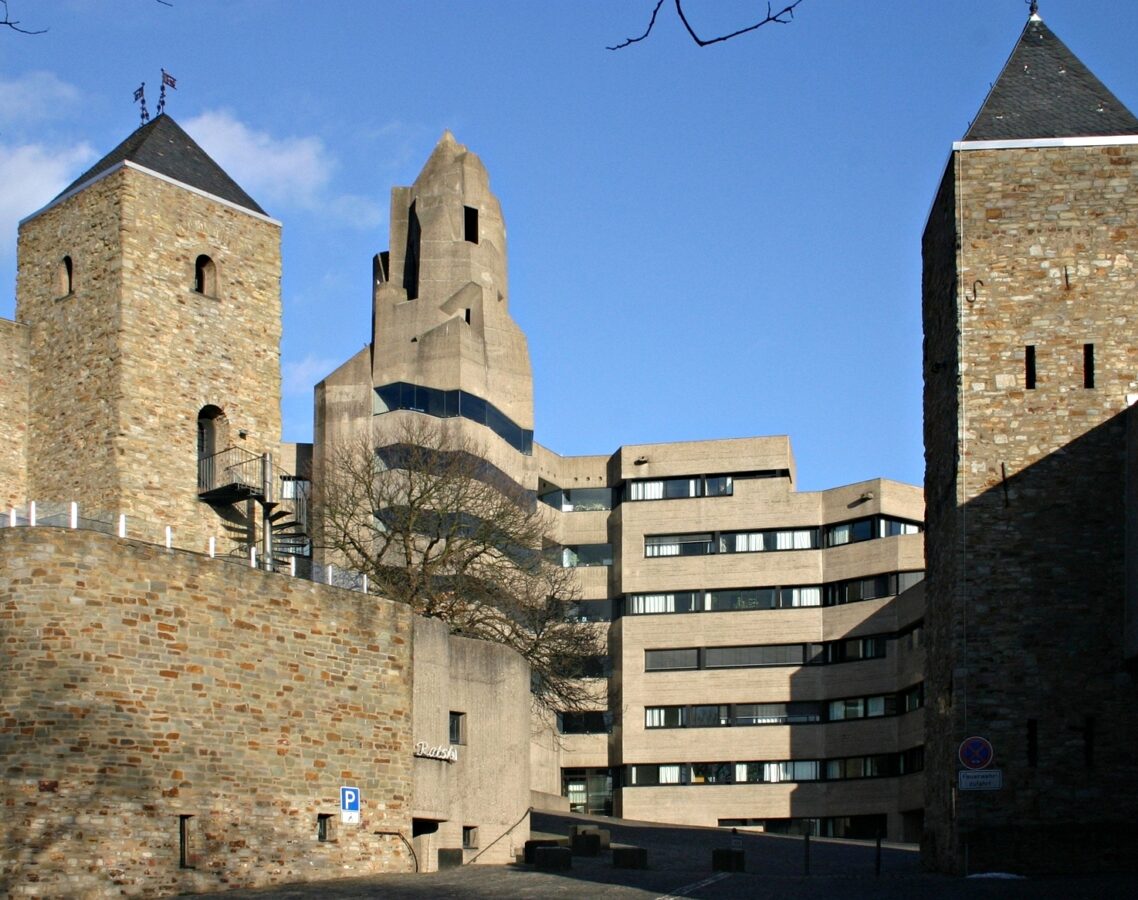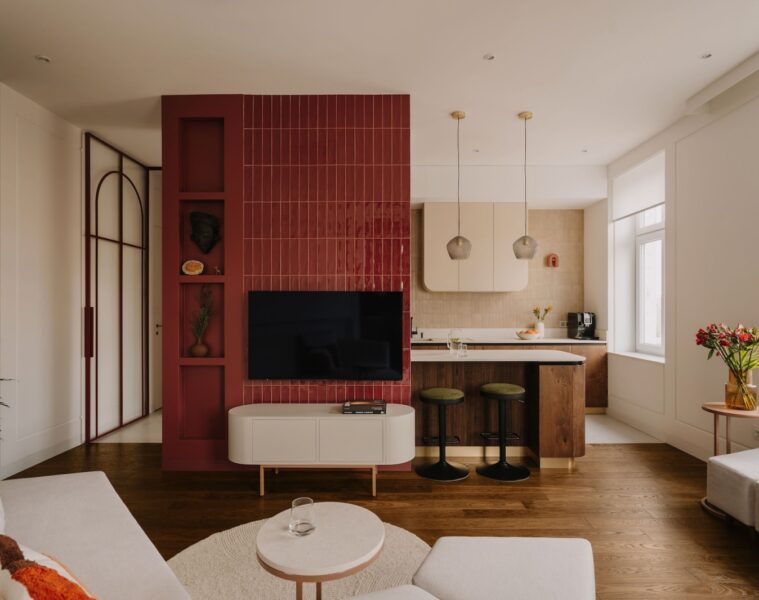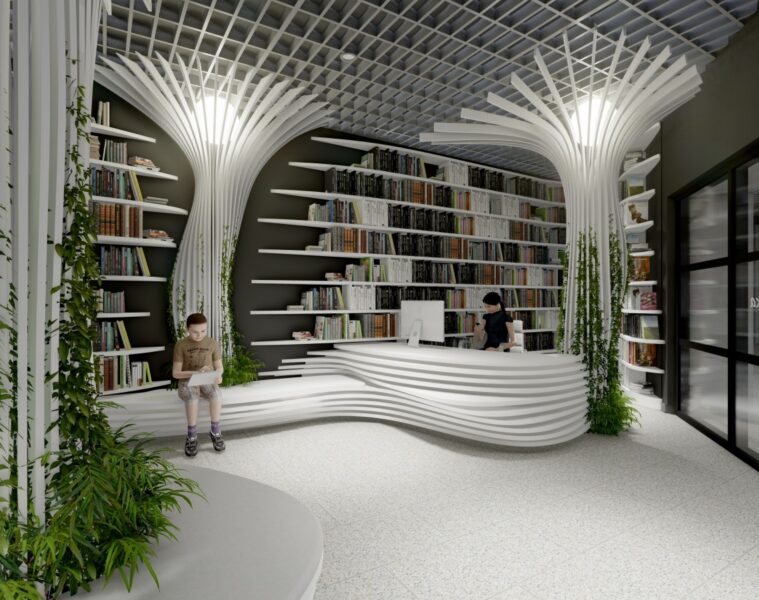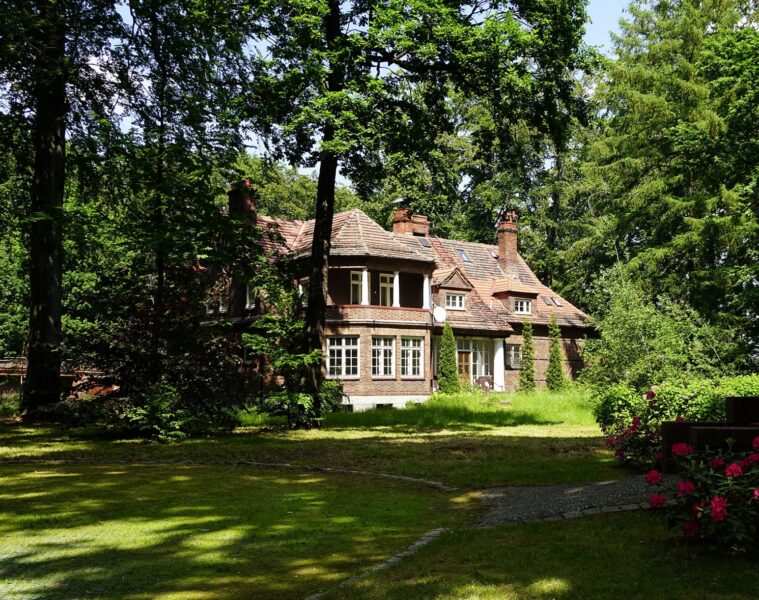The Monument to Struggle and Martyrdom at Majdanek is an eloquent and austere form of commemoration of the victims of the German Nazi concentration camp, which was unveiled in 1969. It is one of the most recognisable buildings in Lublin, which has also been recognised internationally.
In 1961, a plan was approved for the new development of the hitherto disordered camp space. The previously venerated mound of earth mixed with the ashes of the victims was surrounded by a concrete wall about 1 metre high. It has since become a place to officially pay tribute to the murdered prisoners. In 1967 the Council for the Protection of Monuments to Struggle and Martyrdom and the Society for the Protection of Majdanek, in cooperation with the Union of Polish Artists and Designers and the Association of Polish Architects, announced “a general competition for a monument commemorating the victims of the death camp at Majdanek”.
Majdanek camp. Source: Krzysztof Kokowicz, CC BY-SA 3.0 PL, via Wikimedia Commons
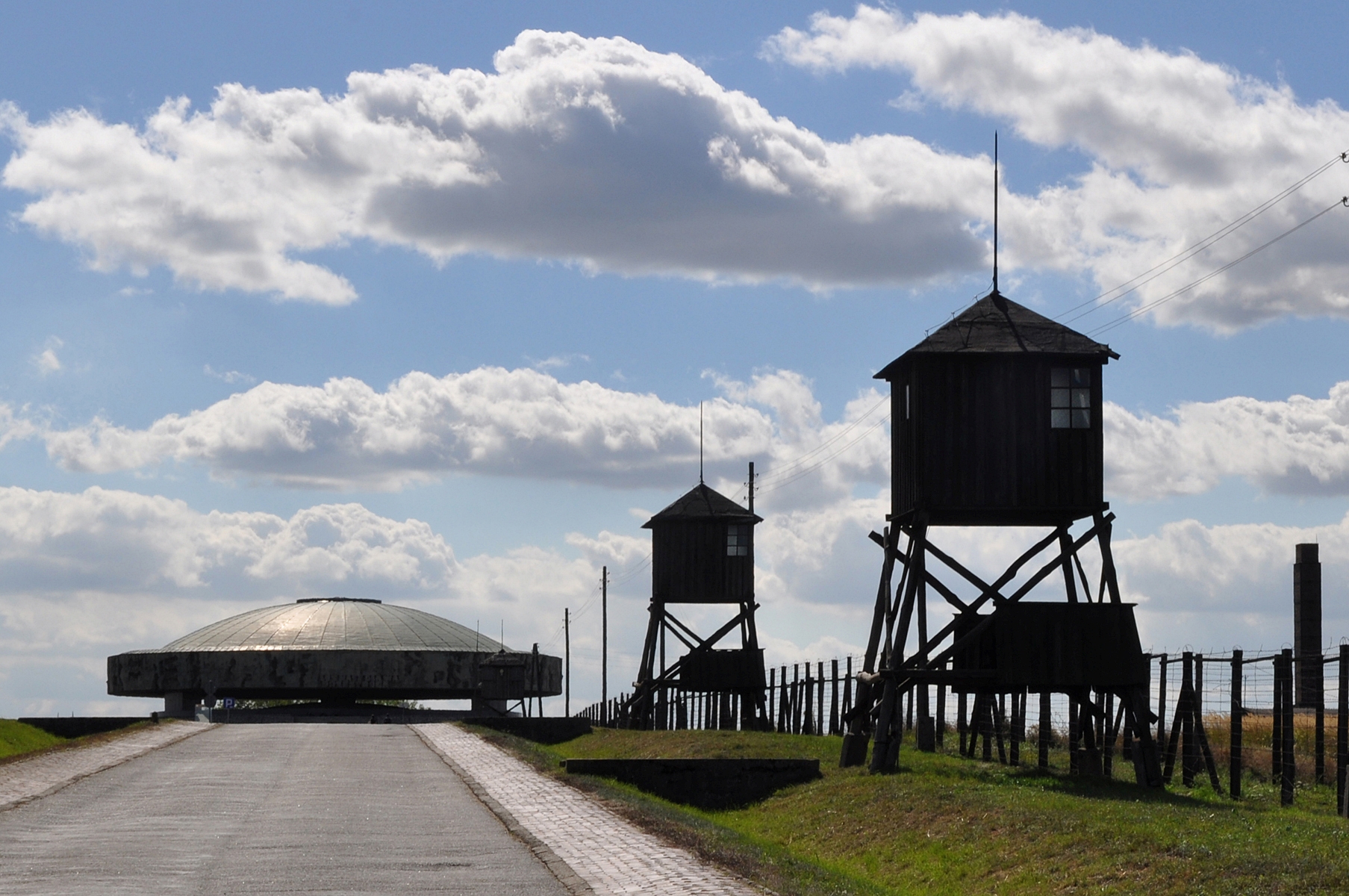
The competition attracted quite a lot of interest. In the end, the design of Viktor Tolkin and Janusz Dembek was decided upon. Their design included an architectural and sculptural complex consisting of three elements: a monumental sculpture at the entrance to the camp – the Gate, leading up to it and leading to the crematorium via the historic camp road – the Road of Homage and Remembrance, and the Mausoleum, where it was planned to deposit and secure the earth with ashes from the already existing mound. In the spring of 1968, preparations of the site for the construction of the complex began. Work on the memorial took place in several sections simultaneously, 24 hours a day. The main contractor, along with a number of subcontractors, was the Lublin Municipal Construction Company. The person responsible for the technical side of the construction of the monument was the co-author of the project, Janusz Dembek, engineer. Stone for the construction of the memorial was supplied by quarries in Radków, Strzegom, Iława, and Borowa. In total, 600 tonnes of clay, 1500 tonnes of granite, 400 tonnes of reinforcing steel, 450 tonnes of basalt aggregate and 2200 tonnes of granite aggregate were used to build the entire memorial.
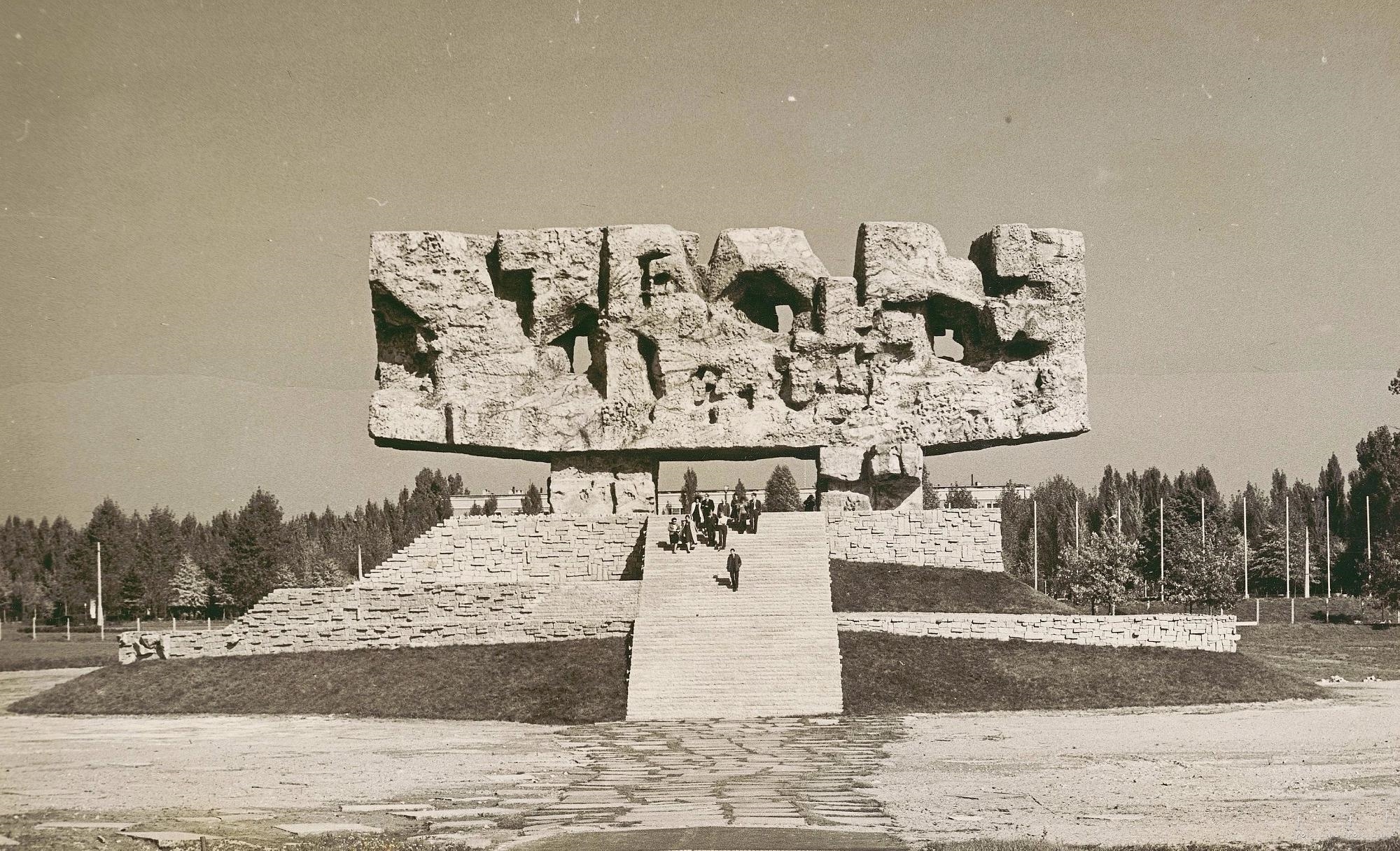
The main part of the monument, the so-called Gate, is a concrete casting measuring 10.8 × 35 x 7.6 metres. Two reinforced concrete pylons support the sculptural structure – a skeleton on which clay and gypsum were imposed, from which the sculpture, then covered with concrete, was formed. The gate sits on an earthen mound clad in granite and poured concrete. It is intended by the author to symbolise the boundary between two worlds – the world of the living and freedom outside the camp and the world of the dead and martyrdom behind the Gate. At the left pylon of the gate is a plaque with the inscription: “To the heroes of Majdanek who, fighting against the Nazi genocide for the freedom of their nations and all humanity, defending the ideals of humanity and their own dignity, suffered a martyr’s death here. The Council of State of the Polish People’s Republic, as an expression of remembrance and tribute to their martyrdom and struggle against fascism, awards the Order of the Cross of Grunwald 1st Class. Warsaw 1969 20 September.” The right pylon bears Tolkin’s autograph. The Road of Homage and Remembrance consists of two sections: a concrete avenue that descends into a ravine and a 1,300-metre-long asphalt avenue leading from the southern steps of the Gate, along the camp to the Mausoleum.
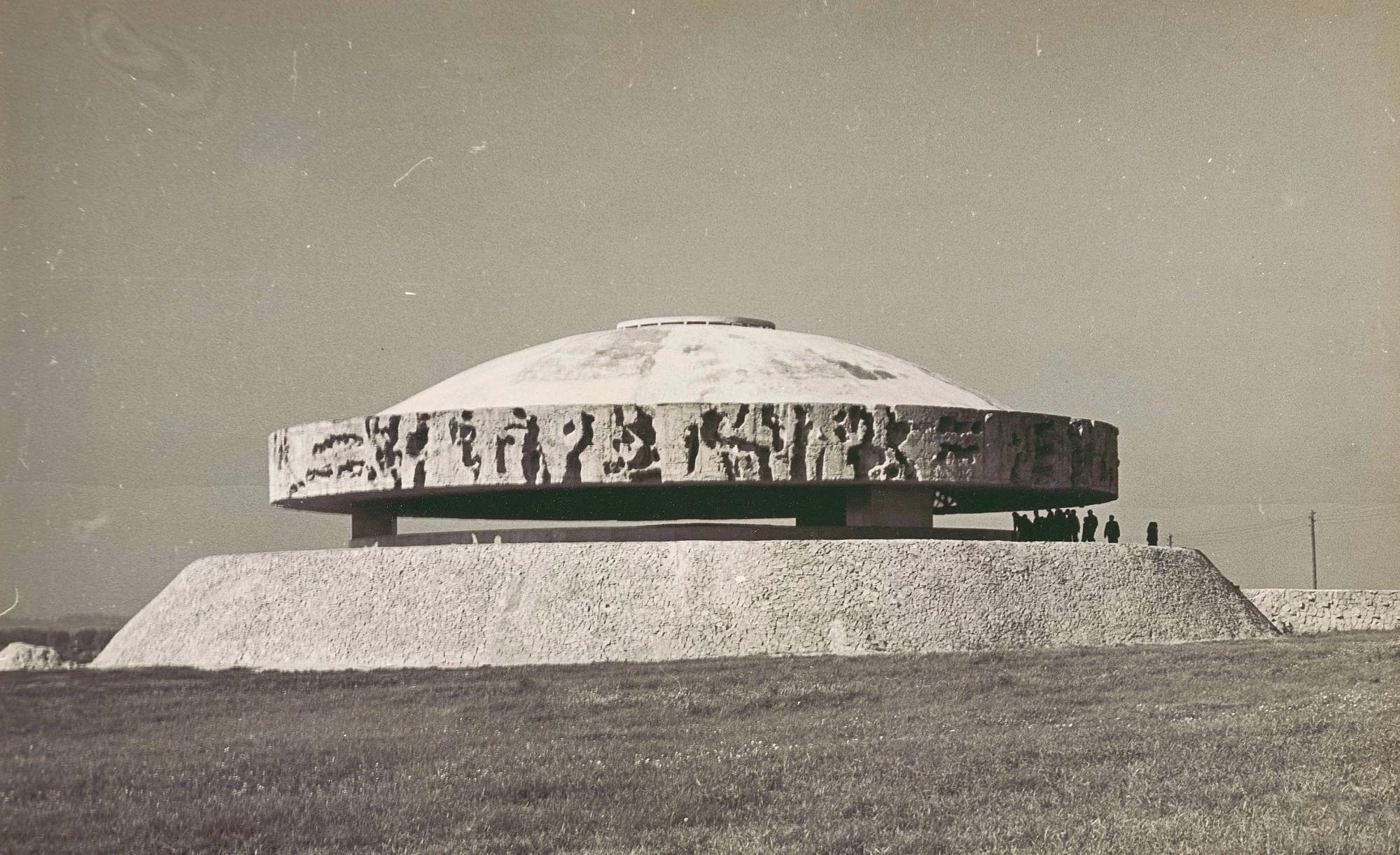
The second element of the monument is the Mausoleum. It is a concrete dome measuring 14.5 (height) by 35 (diameter) metres. The dome is set on three supports. The outer walls of the dome are clad in concrete cladding in an abstract form that alludes to the appearance of the Gate and copper plating. At its top is a skylight. Above the main staircase leading from the Path of Homage and Remembrance, the dome bears the inscription ‘Our fate for you is a warning’, which is a quotation from a poem entitled Requiem by Franciszek Fenikowski. The dome, maintaining a 2.5-metre clearance, covers a syenite-lined ‘bowl’. It contains earth with the ashes of prisoners transferred from a mound built in 1947. Later, the earth in the Mausoleum was covered with so-called glass water, preventing it from being blown away and overgrown by plants. Tolkin derived the form of the Mausoleum from the Slavic burial urn – a vessel with ashes covered by a lid.
on 21 September 1969, the ceremonial unveiling of the monument took place. It was attended by representatives of the highest state authorities. The crowd gathered at Majdanek on that day was estimated at nearly 100,000 people. Over the decades of its existence, the monument has become one of the most characteristic elements of Lublin’s skyline and a symbol of its tragic history during World War II.
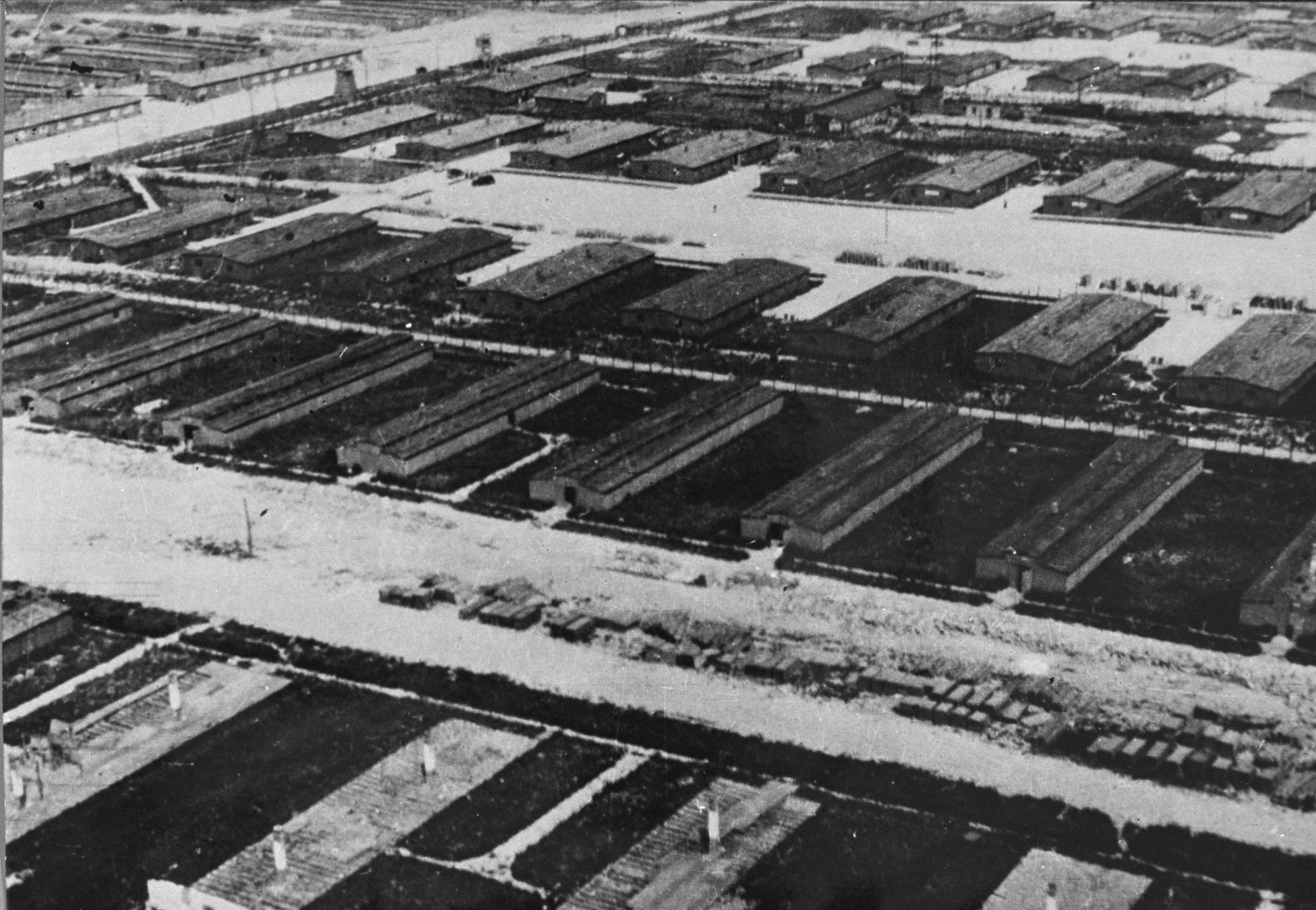
Majdanek was a German concentration camp that was established by a decision of Heinrich Himmler. He ordered the construction of a camp “for 25,000-50,000 prisoners who would be used in workshops and on SS and police construction sites”. In February 1943, the camp was renamed Konzentrationslager Lublin – a concentration camp. The prisoners came from almost 30 countries. Citizens of Poland, the Soviet Union and Czechoslovakia predominated. Apart from Jews and Poles, the most numerous nationality groups were Russians, Byelorussians and Ukrainians. Among the nearly 80,000 prisoners who died at Majdanek – for this is the number mentioned in the latest research – the largest number were Jews (about 60,000 people).
Source: majdanek.eu, dziennikwschodni.pl
Read also: Museum | History | Sculpture | Lublin | Architecture in Poland | Concrete

